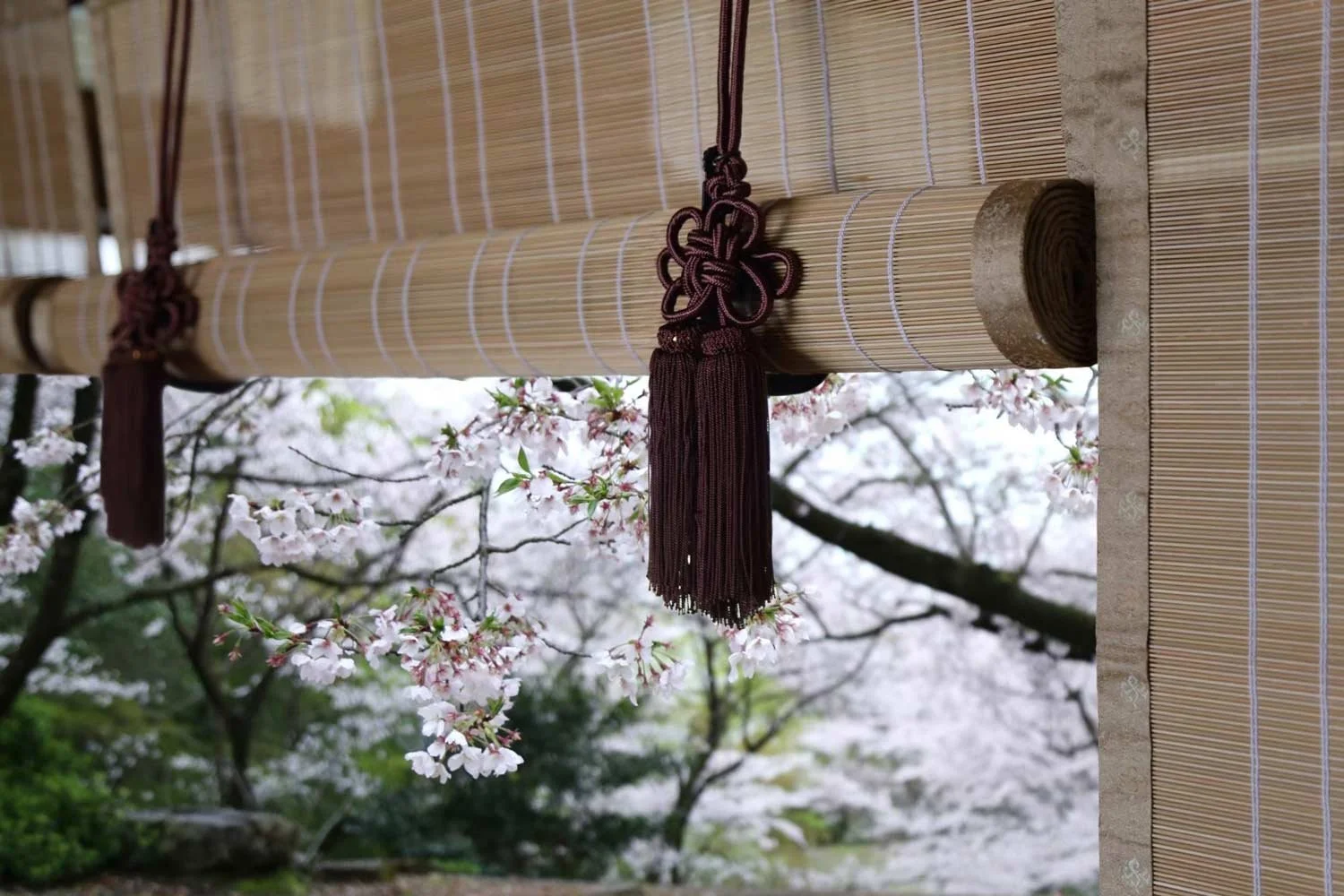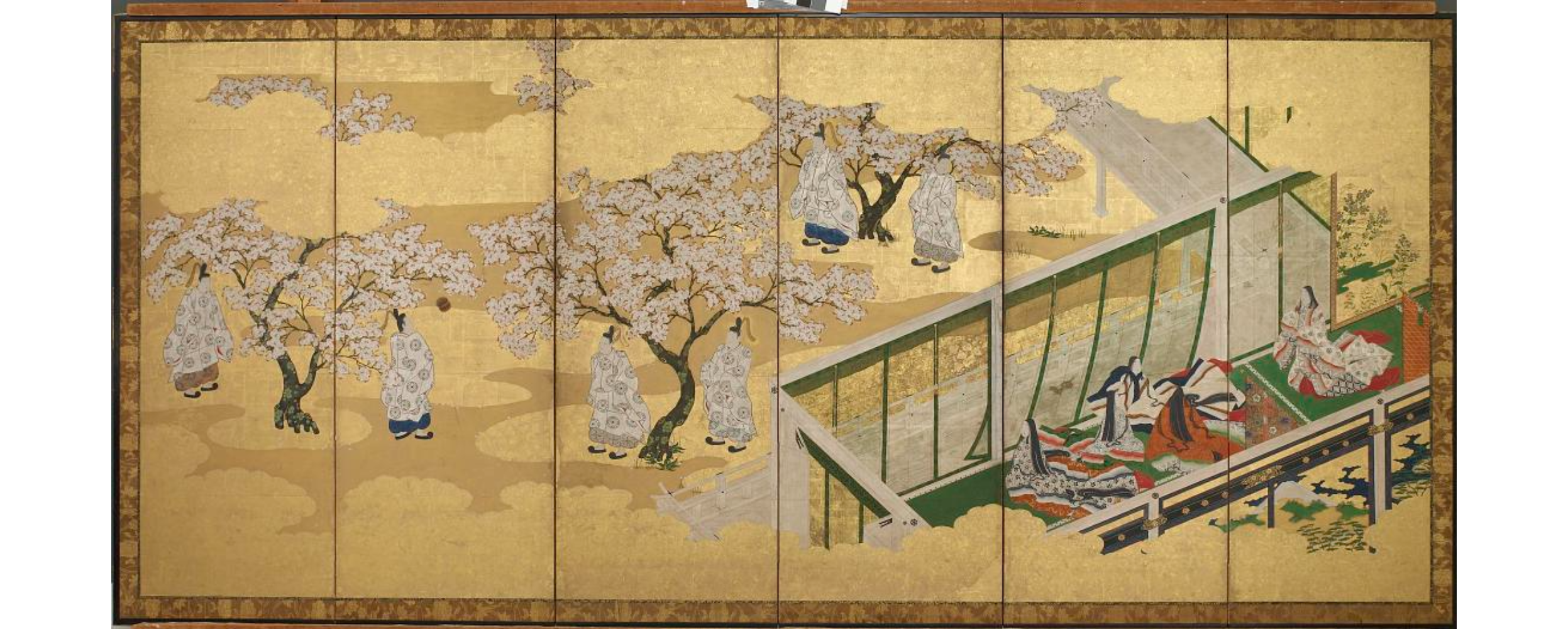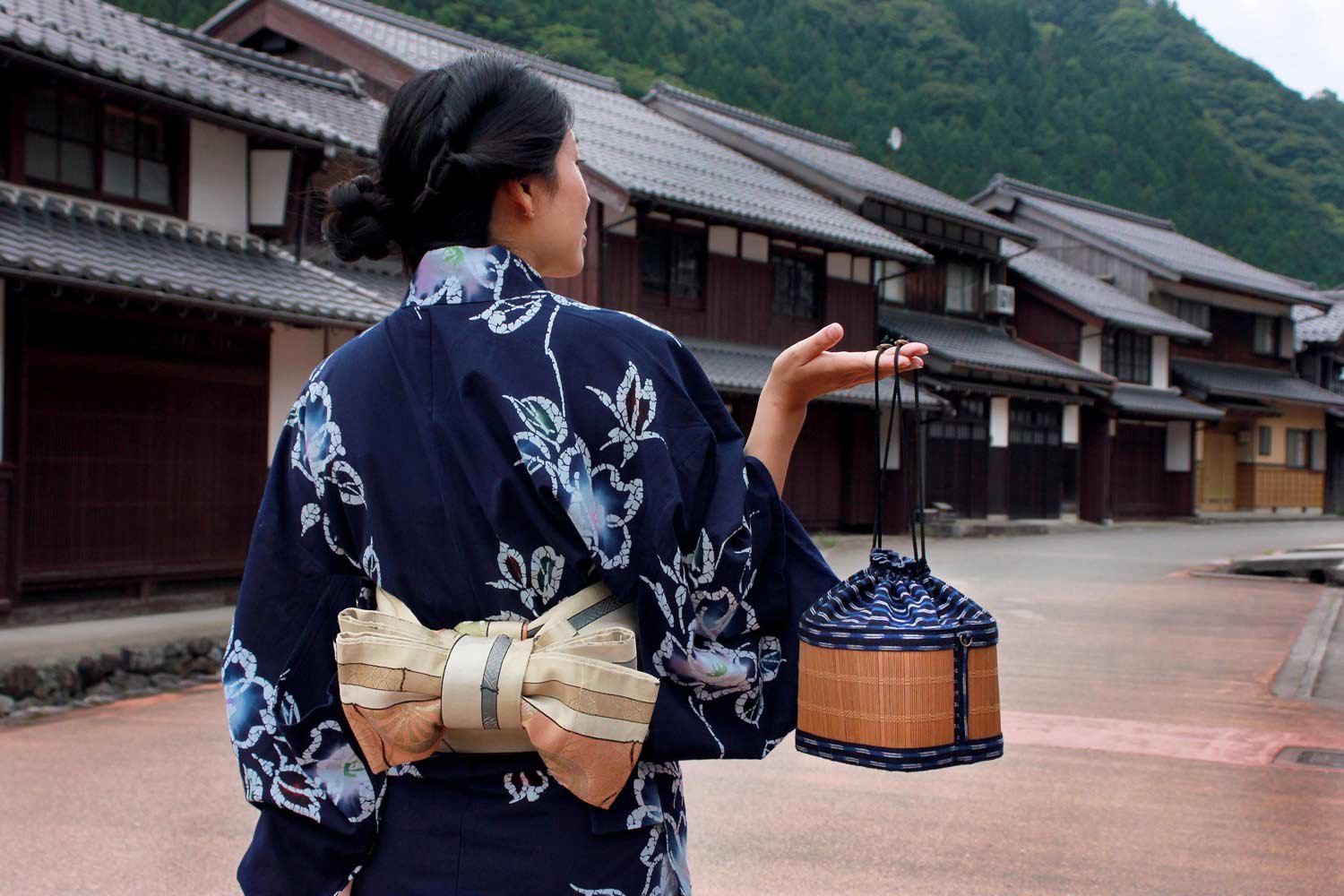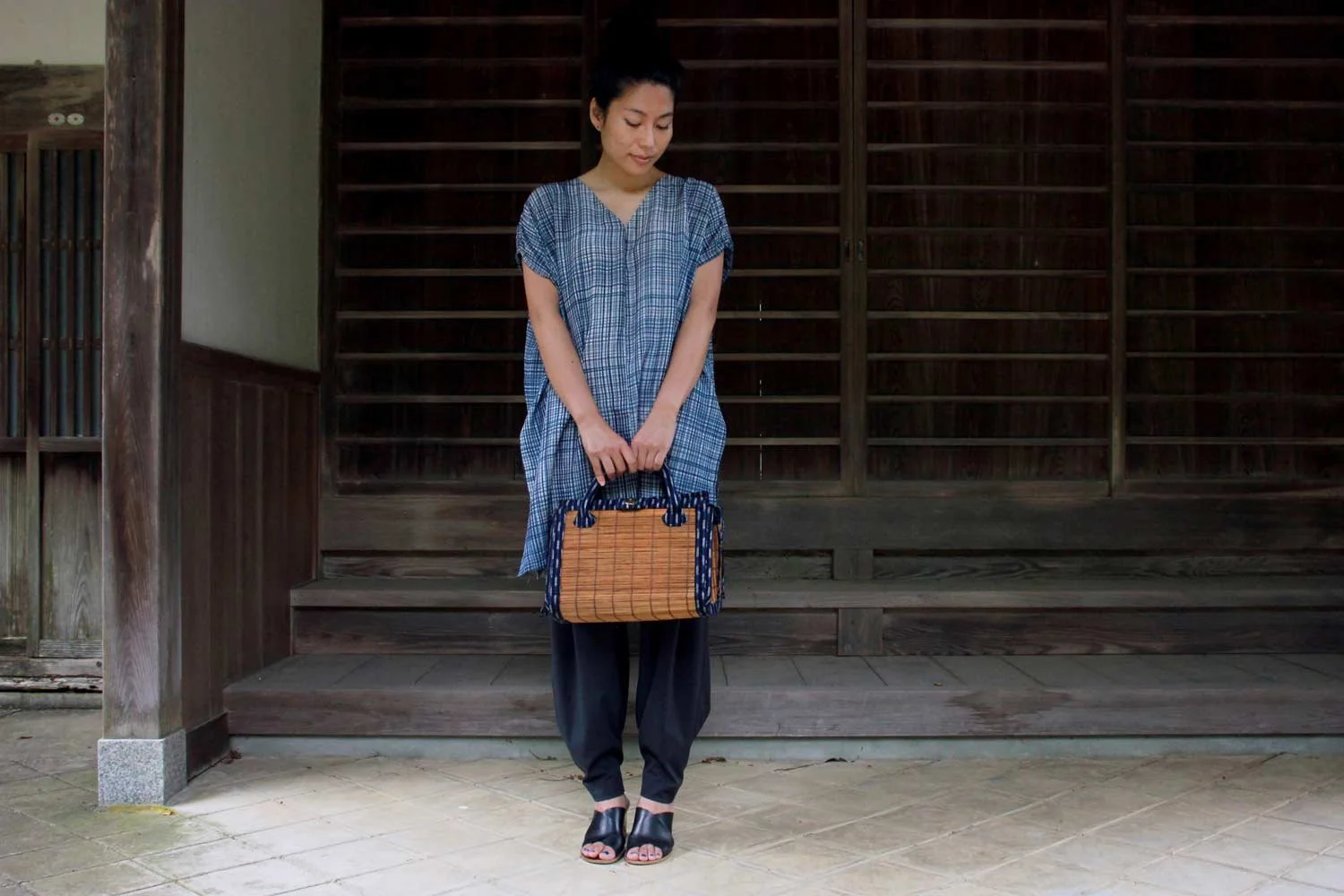Upcycling traditional bamboo blinds
⏳ 4 min read
Reclaiming iconic Japanese decor into wearable bags
As you all know by now, I like an up-cycling challenge! Give me a fabric scrap or any unwanted material, and I will be delighted to breathe new life into it. So it was very tempting for me when I visited Shikada Sangyo, a 100-year-old bamboo blind-making company, to see their offcuts on a little shelf in a corner. My guide during this visit told me they were looking for ways to reclaim these fragments of blinds and gave me a piece to take home. The next day I was stitching it into a bag and this is how our collaboration started in 2020.
What is Japanese sudare?
Traditional bamboo blinds, known as "sudare" in Japanese, have been used in Japan for centuries. They are made by weaving thin strips of bamboo together vertically, creating a lightweight and flexible screen. Sudare serve various purposes and are valued for several reasons. First of all, sudare are a great way to control your privacy because it creates a visual screen that still allows airflow and natural light to enter. The beautiful old-style bamboo blinds, decorated with brocades and tassels, always remind me of scenes in the Tale of Genji with characters peeking through the blinds.
The Tale of Genji, Chapter 34; Kashiwagi catches sight of the Third Princess
Sudare are also appreciated for their simple and natural beauty and they represent an important element of Japanese traditional architecture. Today, they continue to be used and appreciated in modern Japan, both for their functional benefits and their contribution to the beauty of traditional Japanese architecture and design. You can see the most beautiful (and expensive) sudare in shrines and temples.
A nostalgic summer feel
Sudare is often associated with summer. Its use during hot months provides shade and helps to cool interior spaces. Moreover, this material carries a sense of tradition and nostalgia for many Japanese people. For these reasons, I designed a collection of summer bags that can be worn with either a Western-style outfit, or a kimono outfit (or a yukata, a summer version of the traditional kimono). While this material might evoke a familiar feeling for those who have lived in Japan, I believe the simplicity and the artistry of this traditional craft can be appreciated beyond Japan's borders.
The collection
It was in 2020, as I stayed in the Chikugo region in Fukuoka prefecture to study the local textile production, that I had the chance to visit Shikada Sangyo. The company has grown, cut and weaved bamboo to craft high-end shades since 1912. They are located in a charming town called Yame, which is also famous for their tea and lantern productions. But the Chikugo region is also well-known to be the birthplace of a textile I really love: the kurume-kasuri. (I will make sure to write a post about it soon!) During my stay, I also visited many weavers to study the way of making this beautiful indigo tye-dyied material, which was the original goal for my trip. It quickly appeared to me that the two materials looked very good together, so I asked a kurume kasuri producer, Nomura, to join this collaboration.
M. Nakamura and I on my second visit to Shikada as I came to show him the first prototype I made out of their beautiful sudare.
Sewing bamboo
Yes, “sewing through bamboo”. As you read this you can imagine that it was a little harder than I thought but I was determined to find a way to use this beautiful material, and I did! The collection is composed of three designs which I introduce below, and they are only made on request. They are different from my usual creations and require specific techniques to be assembled (including a lot of hand-sewn parts) so the price rank is adjusted accordingly.
Assembling one of the prototype made with sudare and obi fabric.
The clutch
It is delivered with 2 sets of chain: a short one to wear the clutch as a small handbag and a long one to wear it on the shoulder. You change them as you like and also remove them completely to wear your clutch in the hand.
Price: 230 USD/34.000 JPY
Confection schedule: 6 weeks
Order your sudare clutch here.
The kimono pouch
This design is inspired by small drawstring bags traditionally worn by geisha with their kimono outfit. It can be worn on the shoulder with a long chain or by holding the drawstrings.
Price: 250 USD/ 37.000 JPY
Confection schedule: 6 weeks
Order your sudare kimono pouch here.
The handbag
It is delivered with a leather strap to wear it on the shoulder or can be removed to wear it simply by the handles.
Price: 390 USD/ 58.000 JPY
Confection schedule: 9 weeks
Read more and order your sudare handbag here.










